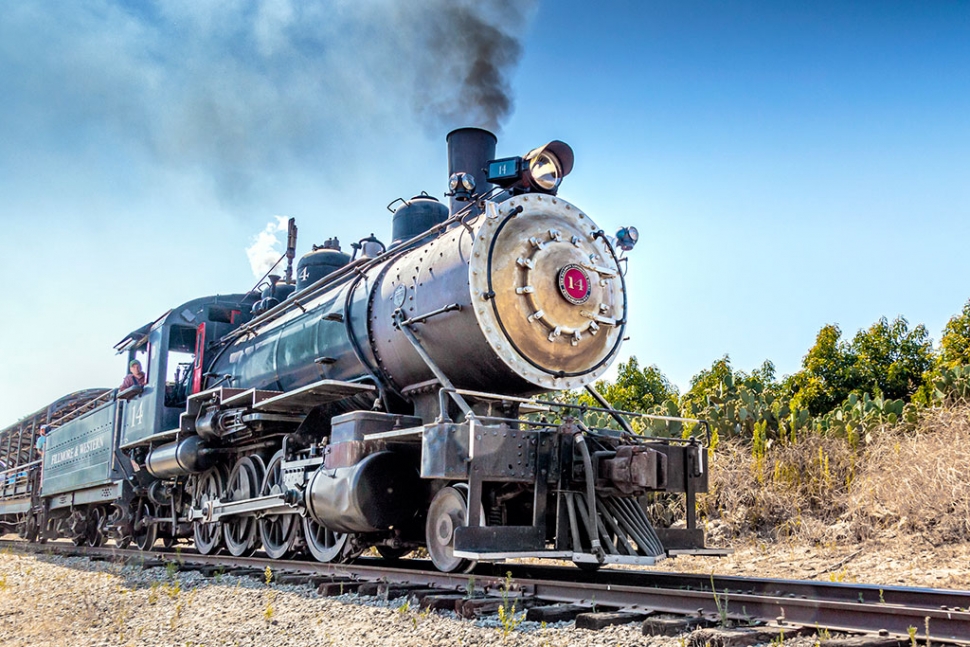|
Focus on Photography
 Photo of the Week: "Steam powered iron horse #14 returning to Fillmore" by Bob Crum. Photo data: Canon 7DMKII, manual mode, Tamron 16-300mm lens @ 16mm. Exposure – ISO 400, aperture f/11, 1/400 second shutter speed. By Bob Crum — Wednesday, September 11th, 2019
It's about style!
 Bob Crum Considering the deluge of emails, were I to charge $10.00 each to use the email addy, I could almost buy a new Chevy Colorado long-bed diesel pickup. Well, OK, at least apply $60 towards the $7,500 down payment. Photographer Ricky W. is so intrigued by the concept of photo styles previously discussed that he wants to know what programs I use to create/apply it to my photographs. Before answering Ricky's question, it's important to understand the underlying rationale for photo styles. Besides compelling subjects and composure, it's essential to begin with a properly exposed photo. Style is an attribute applied to a digital image, not to correct or compensate for an improperly exposed photo. Let's presume that you have an image with all the correct attributes - composition, exposure and tack-sharp focus. What is the format of the image - jpeg or RAW? If it's a jpeg image, you're doomed! As I've said in the past, attempting to apply a style to a jpeg image is like putting lipstick on a hippo. Go back and resume crocheting the sweater you're making for the coming autumn chill. Just kidding. But I must qualify two different applications of photo styles. First, many present-day cameras provide "picture style" options in the camera's programming. You can even download a custom style if so inclined. So, if processing RAW files don't interest you, simply apply one of your camera's picture styles. Furthermore, selecting an in-camera picture style maintains consistency throughout a photo shoot and almost eliminates post-processing work. If you have a Canon camera, Canon’s Picture Style Editor is on the Canon EOS Solutions CD that came with your camera. If you lost the CD, it's available to download at Canon's website. The same for Nikon shooters. Nikon’s Picture Control Utility 2 is available via Nikon’s Download Center. Many camera manufacturers provide numerous picture styles. And often there are more on the company's website. To personalize your photos further, create your own 'style' and upload to your camera. I did this to have a particular 'look' for my specialty: Mermaid boudoir photography. Nikon’s Picture Control Utility is considerably limiting but provides reasonable control to create new image styles. But sooner or later, you're going to grow tired of in-camera picture styles. You'll want something better. You'll want pizazz! Besides jpegs, if you're recording RAW images, hooray! Now you can massage the photo in many more distinctive ways. But to accomplish this, you'll have to post-process the RAW photos. Why bother with post-processing? Creating standard photos, i.e., photos the camera produces are generic and look like everybody else's photos. Ho-hum. Stylizing your photos differentiates them from the gazillion other photos in the wild. But applying an in-camera photo style is limiting your photo style to the camera's programming. Blah! A RAW image is not a photo. Not yet. It's only a digital file similar to a film negative. Unlike a camera's heavily compressed jpeg, a RAW file is a record of the unprocessed sensor data. Raw files contain the image pixels themselves, and the image metadata. Metadata, which means “data about data,” is generated in the camera for each capture. Metadata records shooting data such as the camera model, serial number, the shutter speed, aperture, the focal length, and more. Raw files also include some additional metadata that raw converters need to process the raw capture into an RGB image. There are many software programs available for editing RAW image files. In addition, I'll discuss the programs I use in the near future. Stay tuned. Send comments, suggestions or questions to: focusonphotography@earthlink.net |
